(Food) Markets are a happy place: Japan & South Korea
Explore vibrant markets across Japan and South Korea: from Hakodate's morning market and Hachinohe's Sunday market to Busan's bustling Jagalchi fish market and Jeonju's lively night market.
(Food) markets are my happy place. When I am travelling, I like to visit markets. They give a sense of local culture in so many facets. From the food people are buying or eating to local habits and entertainment. And since I'm always eager to taste local dishes, markets are my absolute favorite. If you force me to decide between visiting a church or a market, I know exactly where I'll go.
When I came up with the idea to write about markets, I realised I have an extensive list of places I like to write about. Like Harar, Osh, Kuqa, Lille, Kumasi, Riga, Esfahan, and of course Amsterdam to name a few. So, this is only part one.
The Hakodate morning market (Japan)
The first market I go to in Japan is the fish market of Hakodate. The city is in the south of Hokkaido, and my last stop on the Northern island. My stay there is for a few days before I take the ferry to Aomori, fully embracing the opportunity to spend an evening on the Keirin track.
As a cycling enthusiast I must see this for myself. Keirin is an Olympic sport, but in Japan it's still a gambling sport. It's that weird one where numbered riders follow a motorbike (derny) until it zooms off, then sprint like mad for the finish. It's not busy in the velodrome and everybody seems more interested in the gambling part than the cyclists racing their arses off. The ladies who work there are super friendly and point me to the free green tea and give me a brochure about Japanese Keirin.
Hakodate itself is charming and has an interesting old quarter (Motomachi) filled with a variety of old houses and churches, a bayside area with red-brick warehouses (including a beer hall), a famous mount with a view and the popular morning market.
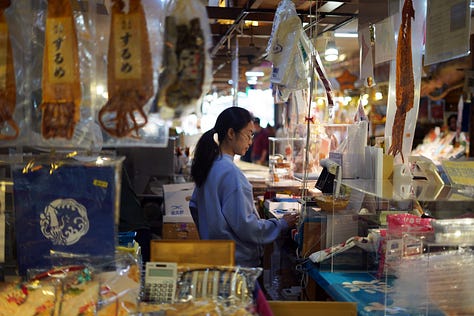
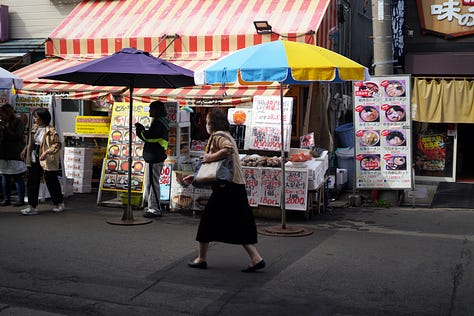

Good morning, fish market!
I start the visit with a cup of coffee at a cosy bar in one of the halls. It's all about fish here, and the main attraction is a basin where visitors can fish for fresh squid. It's like seeing children playing fisherman at their tiny inflatable pool. I don't have the urge to pull out an amateur attempt and just keep on walking along the stalls and smiling at the friendly ladies behind them. I end my visit with a beautiful bowl of rice and fresh seafood on top of it.
The Hakodate Morning Market (函館朝市 / Hakodate Asaichi) is a daily one. Besides fish and shellfish, you can also find fruits, vegetables and drinks there. Around the market, there are several fish restaurants. Inside, there is a food court where you can eat a donburi for lunch.
Hakodate tips
Spend an evening in Hakodate Daimon Yokocho (not far from JR station) for food, drinks & new friends
For the best Shio Ramen: go to Hakodate Shio Ramen Shinano
The Tatehana Wharf morning market in Hachinohe (Japan)
After a memorable lunch at the Furukawa fish market in Aomori, I board the train to Hachinohe. This sounds like a very randomly chosen destination, but it isn't. I did read about a massive Sunday morning market on the outskirts of the city near the ocean. There you go - a very promising reason to visit Hachinohe!
Insider tips on a sticky note
In one of the Yokocho alleyways, I select an izakaya purely based on the noises coming out of it: chatting people and laughter. This already worked for me in Hakodate, which turned out to be a great night with fun people, good snacks and sake.
I take the available seat at the corner between an older man and a couple. He is also visiting Hachinohe; the rest are locals. He is a big fan of the market and insists on giving me insider tips for the next day. He involves the other guests and writes the list on a sticky note. In the meantime, I'm invited to taste the snacks, and the locals ask me where I come from.
The morning market starts at sunrise and ends around 9 AM. It’s easy to reach by bus or local train.
It’s huge!
When I arrive (I skipped the opportunity to make my entrance at sunrise), I'm a bit overwhelmed by the size of the market. It's huge! I pass people selling homegrown vegetables, fruit (you can't miss the apples in Aomori prefecture), fish, coffee, pastries, knives, second-hand items and a lot of ready-made snacks. Most of the vendors have a small stall in front of their small cars. It's Japan, after all.
I order coffee at the stand of the sticky note (I hope at least) and walk further.

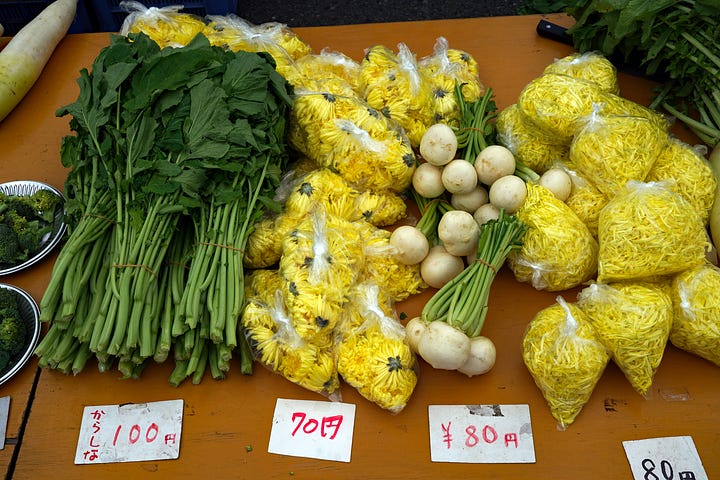
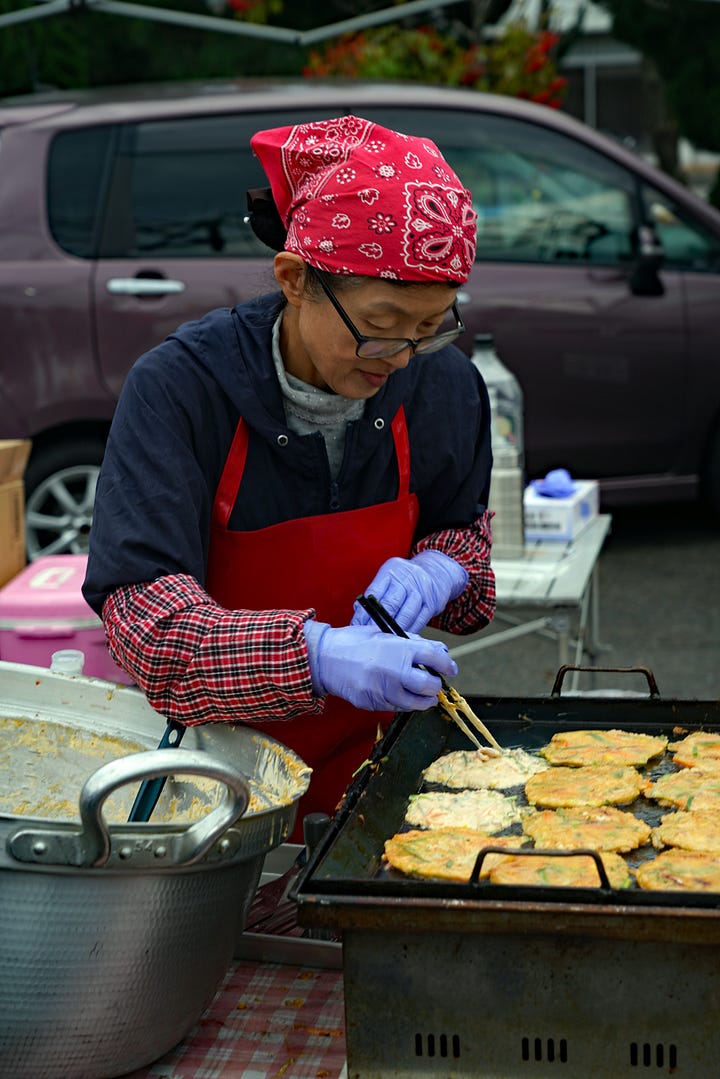

Smoke, frying pans and steam everywhere, and people queuing up for the best food. Without any doubt, I copy the locals and join the one promising queue after another. I do fancy a good warm breakfast right now, and I don't care if it's a soup, fried, or steamed dish. It smells all very good and tasty.
There is also some entertainment on the market. Besides the Ika Don mascots (it's a family apparently), I see a tomato mascot jumping around, a weird prince mascot and a bear in a tank top. Of course, a bear, why not.
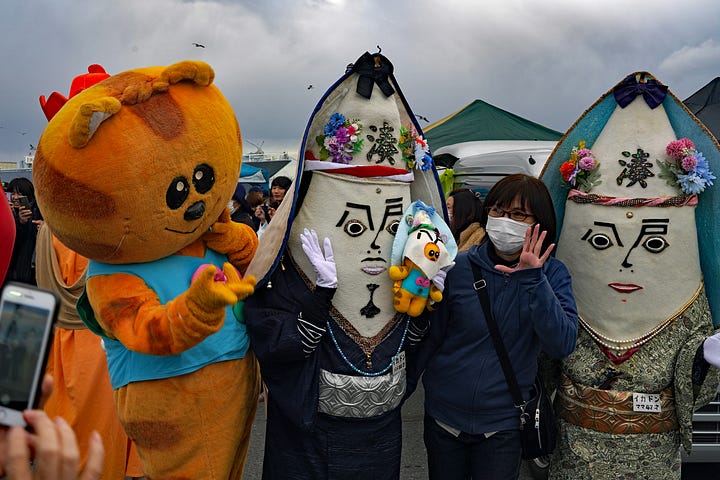
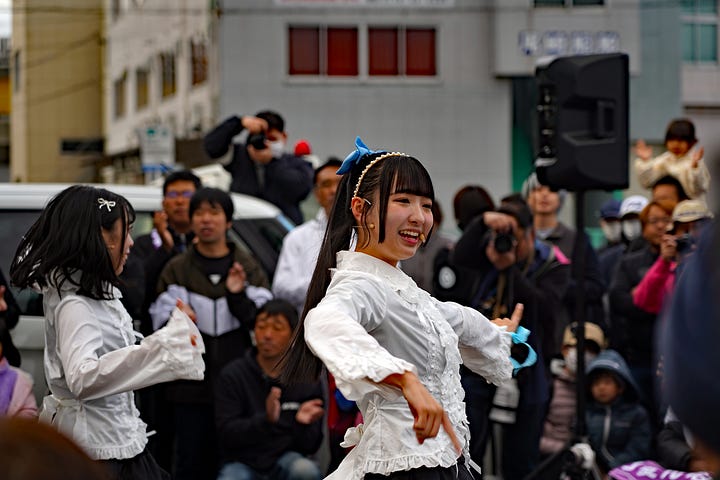
A group of young girls perform their new songs, and a little bit further, a hobby band is trying to entertain the visitors. I join the audience with another coffee; it's so relaxed to sit down and watch all the people around me.
The Jeonju night market (South Korea)
Outside of the historical center, the newer part of the city offers the fun Jeonju Nambu Market. It's a night market like you would expect: vendors making fresh snacks, steaming pans and grills everywhere, people queuing for snacks, people eating those snacks. Paradise.
Because the size is not too big, it invites me to walk around first and check what's on offer. I decide to start with a gimbap topped with meat, followed by a roasted skewer and some gyoza.
Add Jeonju to your itinerary:
The night market is open on Friday and Saturday evenings.
Jeonju is the birthplace of Bibimbap, so please don’t leave the city without eating it!
Not far from the market, you can have some good craft beers at Nomadic.
The Jagalchi Market in Busan (South Korea)
Early morning, I find myself sitting in the metro to the fish market of Busan. The other commuters are on their way to work, and some are extending their sleep. I'm just excited to go to the market.
The Jagalchi market in Busan is the biggest seafood market in South Korea. And open daily from 5 AM to 10 PM.
When I approach the exit of the metro station, I can already smell the fish. The good smell of fish, I mean. But for some, it isn't; this is the reason I'm visiting the market alone: my other half is a vegetarian.
Shellfish
Outdoors, the day is just slowly starting. The vendors are behind their stalls; some of the ladies are chatting with each other, some are sitting there waiting for the crowds, and others are busy with hoses filling up fish tanks.
I start in the first hall I encounter, the one with the shellfish. I pass by some very huge shells, wondering about their taste. On my way to the next hall, I pass the coastline of Busan and see some fishing boats in the harbour.
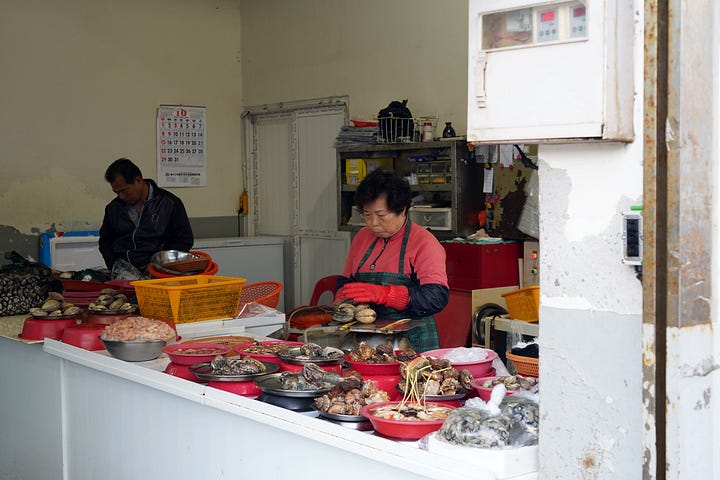

Cramped in tanks
The second hall is the main one, and it is filled with rows of vendors selling all kinds of fish. Most of the fresh fish is displayed on beds of ice or in buckets. But some seafood is still alive and cramped in tanks; not the best sight to be honest. I meander through the rows and spot some exotic specimens. Like penis fish. Yup.
On the upper floor of the main hall are restaurants where you can eat the fish you select downstairs. I can imagine it can be bustling around lunchtime. I'm a bit jealous of the groups who will gather there later, but I must travel on.
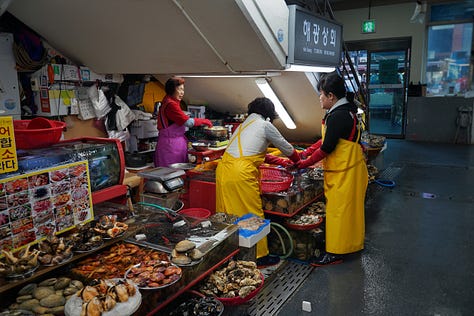
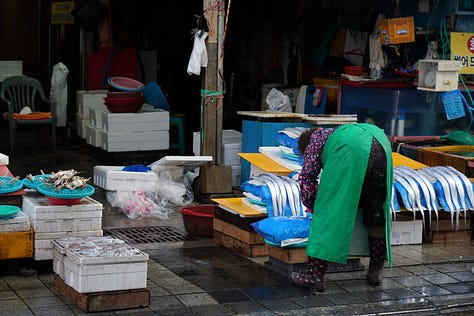
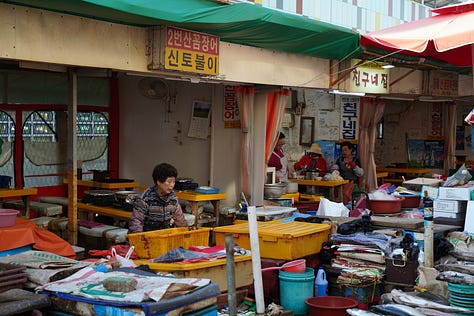
Read, watch, listen and whatever:
Hachinohe also has a very interesting modern art museum
People into Japan are probably also into Studio Ghibli (I am!). With the launch of GPT-4o, there is a flood of Ghibli-style A.I. images, according to the New Yorker perhaps more troubling for viewers than for artists.
More markets? Yes! Read the ‘Markets around the world’ posts by fellow Substacker
: Part 1 (From the Andes to the Balkans) and Part 2 (From Europe to Asia, passing by Marrakesh and Jerusalem).More on Jeonju, Busan and South Korea (like food markets in Seoul!):
My journey as a travel writer
Part 9
I skipped some of these (part 8 was shared in December), but I am still on that journey. Currently taking travel journalism classes - very insightful and helpful! - and experimenting with Substack as well.
I recently posted a photo-essay about a memorable visit to a soap factory in Nablus 🇵🇸. This was an experiment with Substack; I wanted to see if I could post something exclusively for the Substack community. It's possible, yes, but it's also emailed a teaser to non-Substack users. So I could call it a failed experiment. The post itself is quite entertaining I have to say, so here it is:
I'm curious about your experiments with Substack. Let me know!





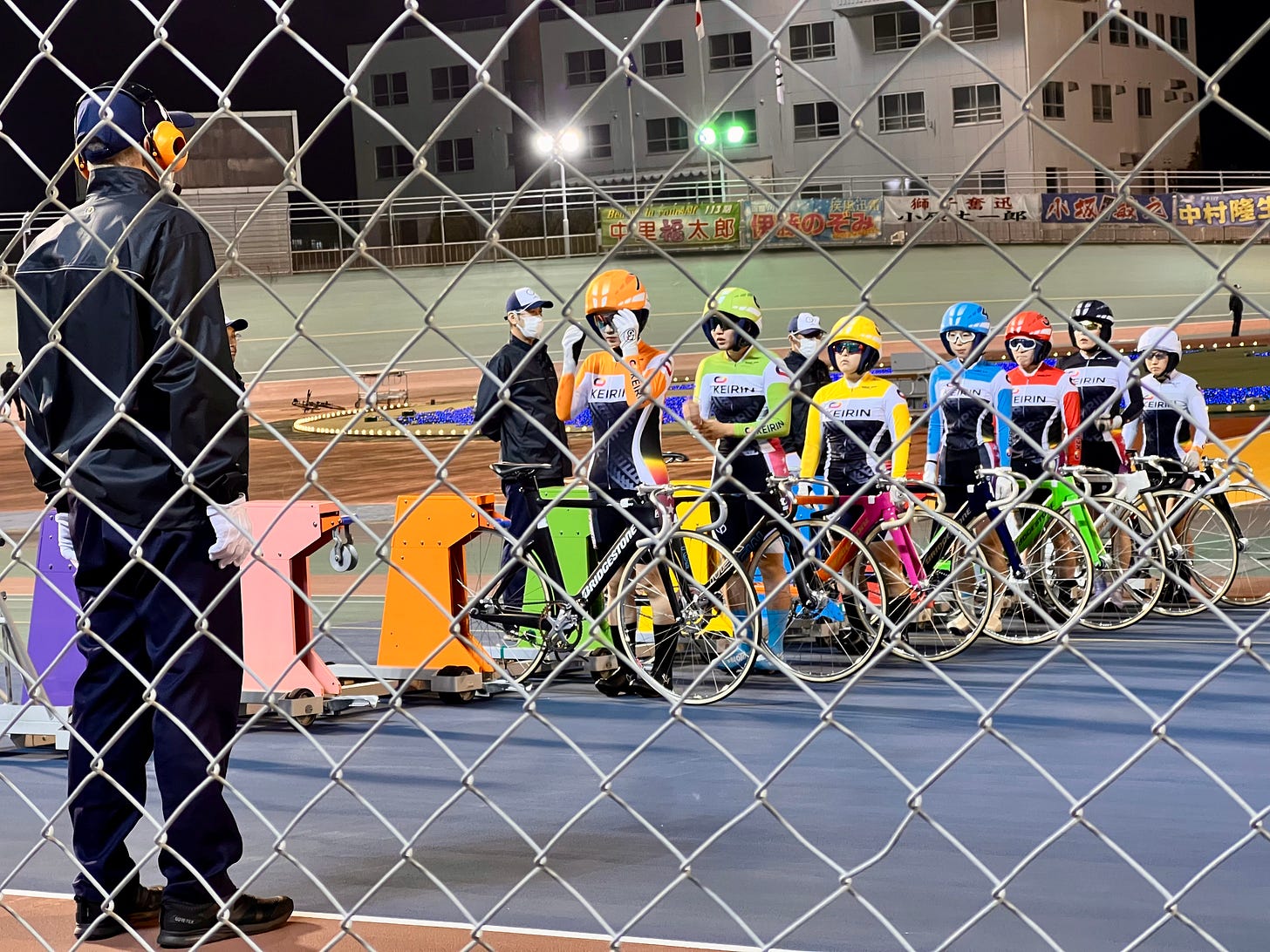
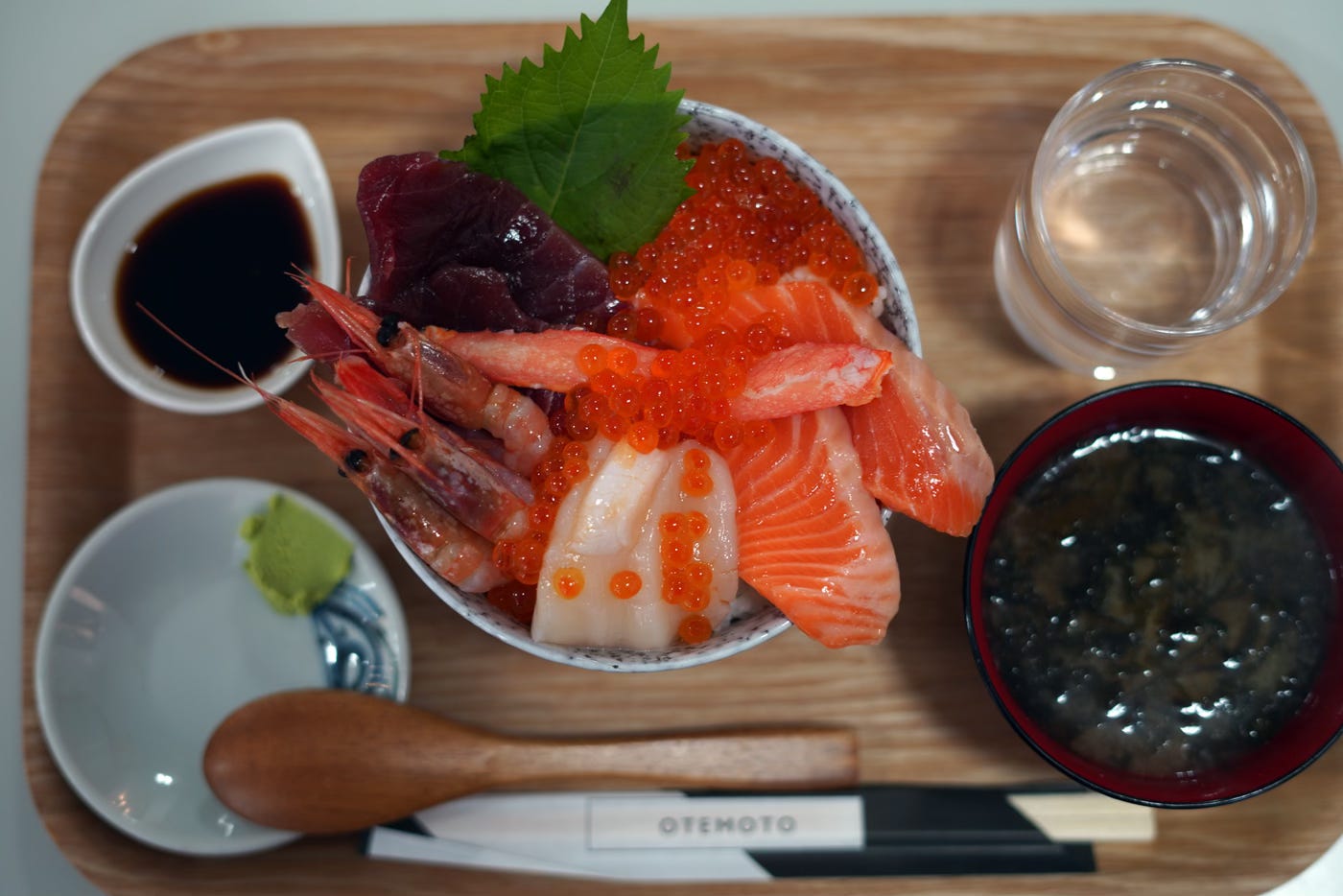
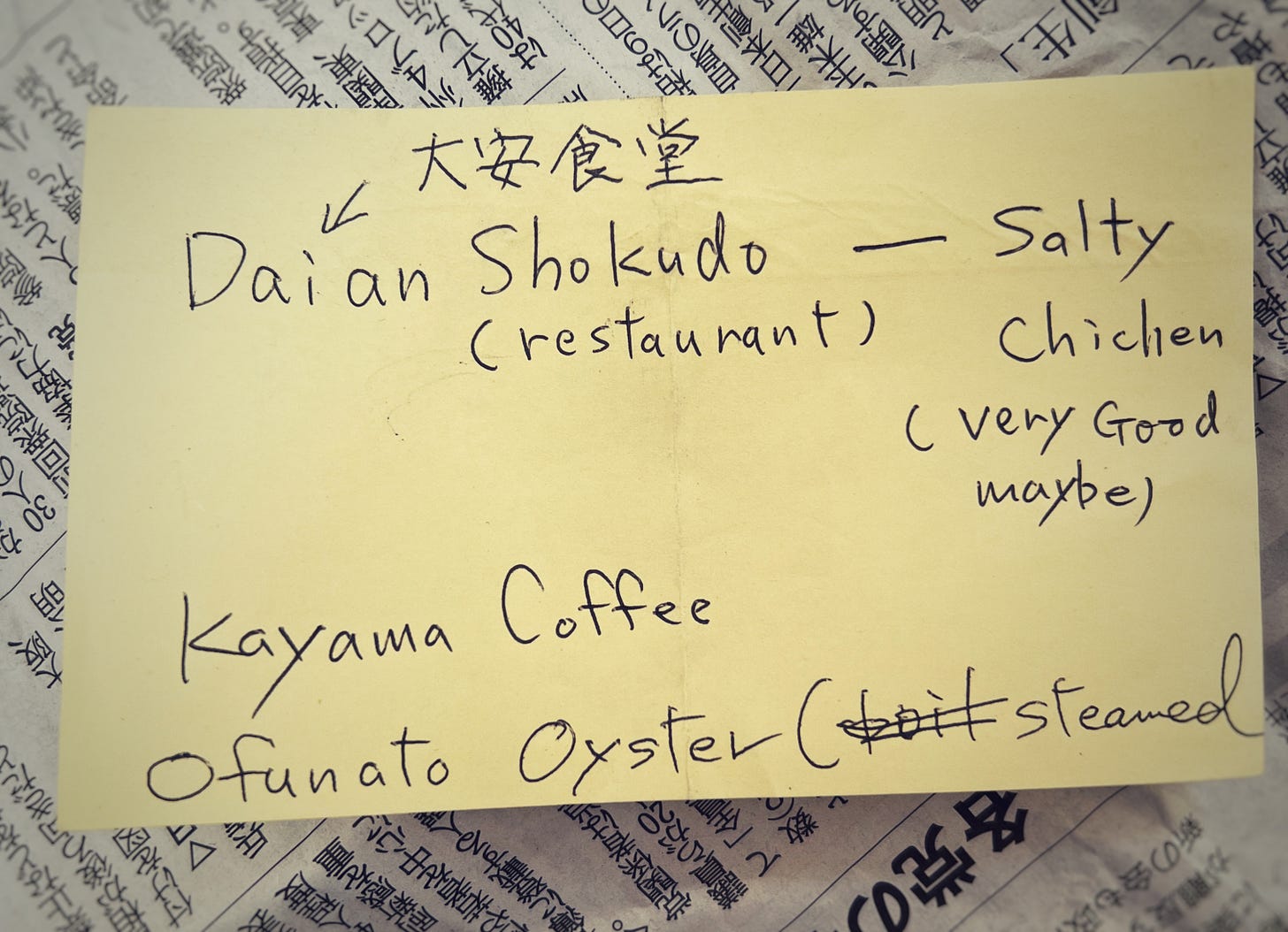

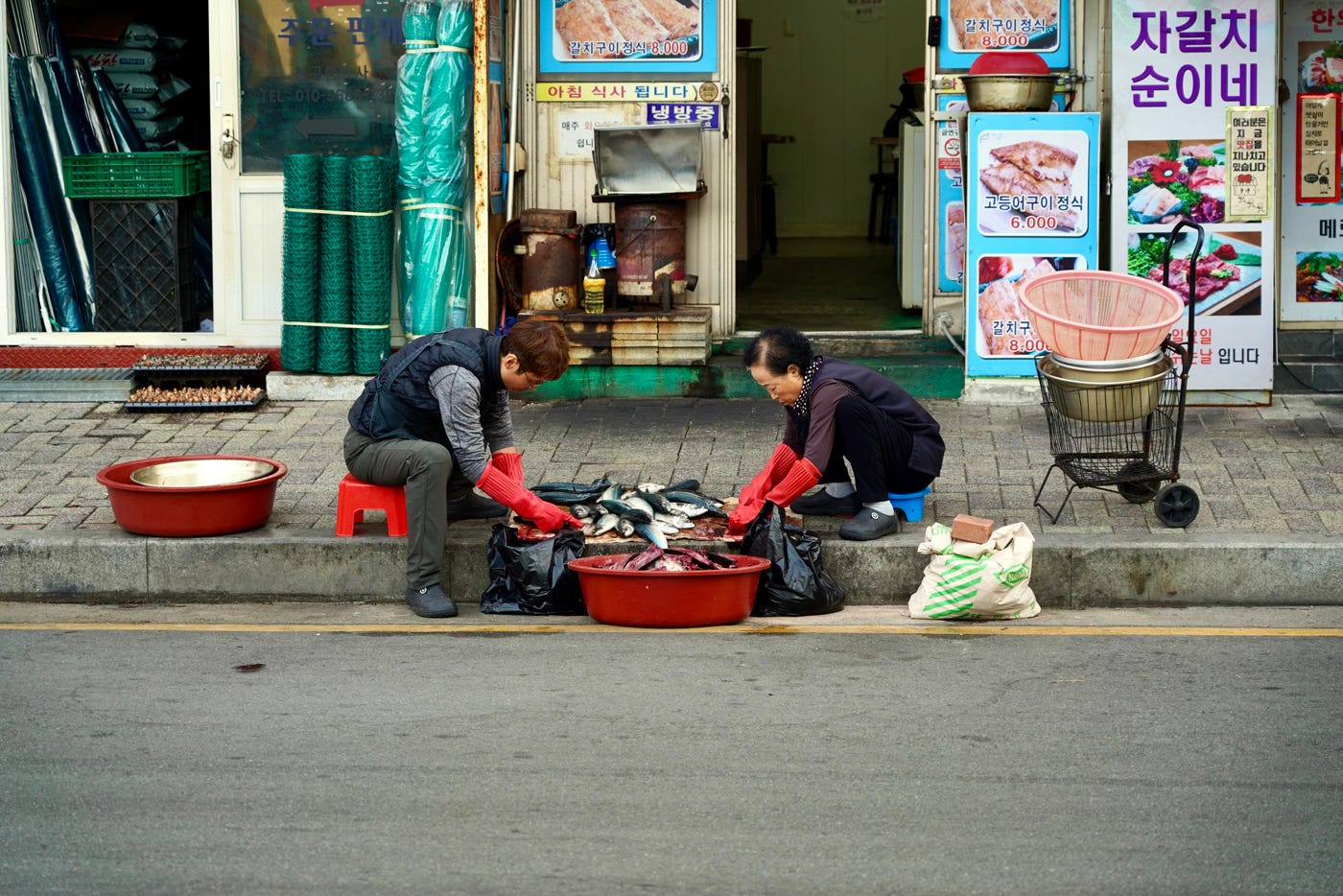
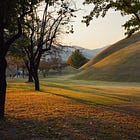

Lovely stuff. I'm considering Hakodate for November this year, so these tips shall be noted!
Great! I envy you! Thank you for the shout-out!